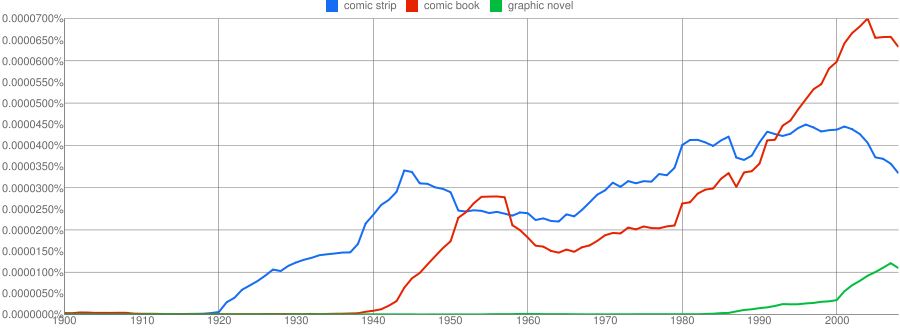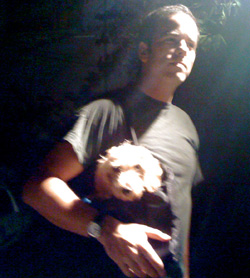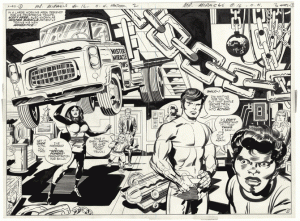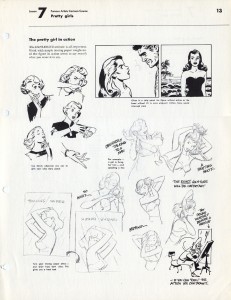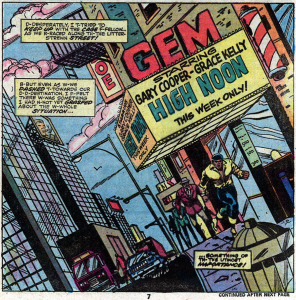Recapping television shows must be draining. Or at least one assumes such to be the case, based on the energy the writers at the Onion’s A.V. Club seem able to muster when writing about comics. One of the keenest joys available for the connoisseur of online comics criticism lies in noting the crazy letter-grade equivalences that pop up in each installment of the A.V. Club’s semi-regular “Comics Panel” feature. Ah, the intellectual whiplash that results from trying to understand what kind of schizophrenic groupthink could lead to assigning Chris Ware’s latest issue of Acme Novelty Library the exact same grade (A-) as the latest undistinguished revamp of T.H.U.N.D.E.R. Agents.
To a certain kind of masochist (and don’t all comic-book fans members belong to that persuasion?), this is a fine headache-inducing brew indeed, fer soytin. If you haven’t discovered this pleasure for yourself, search the archives; there is much to savor.
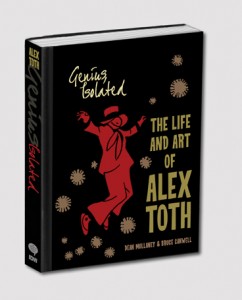
Don't be fooled by this photo — the book does not yet exist!
But all of that pales next to the A.V. Club’s latest and greatest feat, their review of Dean Mullaney & Bruce Canwell’s
Genius, Isolated: The Life and Art of Alex Toth.
Here is the text in full, as published in the Comics Panel of November 5:
The latest in a flood of biographical collections of Golden and Silver Age comic-book artists, Genius, Isolated: The Life And Art Of Alex Toth (IDW) is easily the classiest of the group. It’s not only that the book is handsome, beautifully designed, and lengthy, with lots of rarities (including the terrific “Jon Fury” material Toth produced in the service). Nor is it that it’s much better written than most such works, by tested comics researchers Dean Mullaney and Bruce Canwell. It’s that Toth himself is an incredibly fascinating figure. Even if he were only known for his comics work, he’d be considered one of the greats. Genius, Isolated presents enough material showing his brilliance at action drawing and character design to firmly make the case that he deserves the deluxe biographical treatment. But Toth was also a fascinating person, an outspoken critic and defender of the comics medium, a pioneering animator, and a great cartoonist. He’s one of the great characters of the medium, as well as one of its best practitioners, and a worthy subject for this essential biography… A
What makes this review so impressive, of course, is that the book in question not only had not been published at the time of publication, it had not yet even been finished! Bruce Canwell was still researching the text (and is still making final touches on it), and Dean Mullaney is still working on the book’s final design. These facts make one wonder how the A.V. Club can so confidently dismiss the writing and praise characterize the writing and design of the book (much less compare it to other reprints), but it is probably not wise to speculate too far.
I wrote Mullaney about all of this, and asked him if he remembered his initial response to the review. Mullaney’s reply: “Surprise, at first. Then confusion. I thought perhaps I was on Earth-Two, where the book had already been published. Then mild pleasure in noting that we received the highest rating of the week!”
Genius, Isolated will be sent to printers in January, and is scheduled for a mid-March release. Considering the subject, authors, and publisher, it will almost certainly be excellent. I’ll wait until I see it before I say for sure, though.
For more information, go to the Library of American Comics website.
UPDATE: The A.V. Club’s Keith Phipps has responded in comments, and explains the situation in about as gracious and straightforward a way as anyone could reasonably ask, here and here.
In addition to that, Phipps has posted an apology and explanation at the A.V. Club itself, which can be read here.









